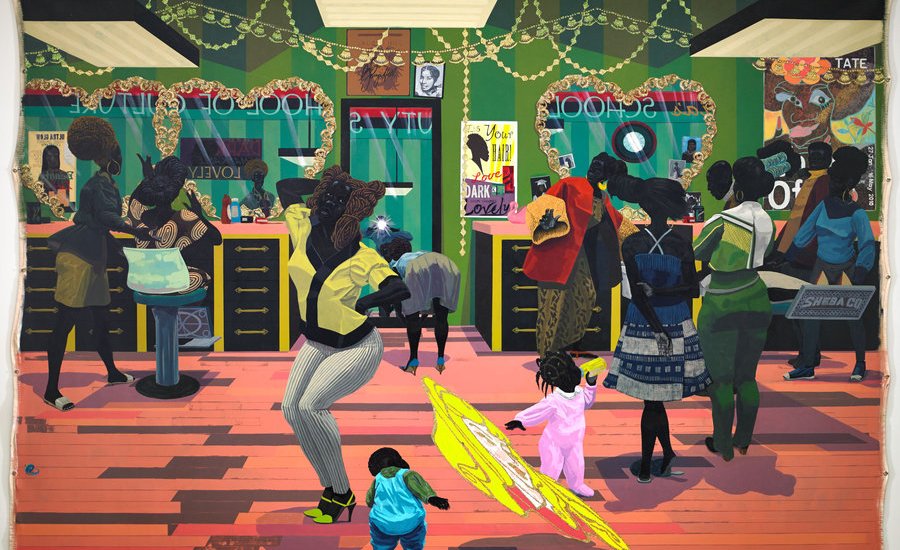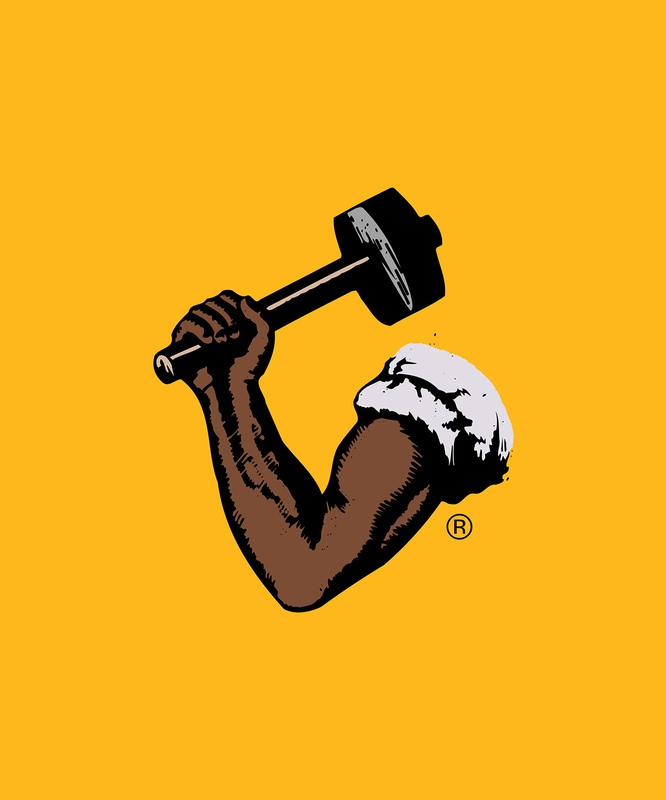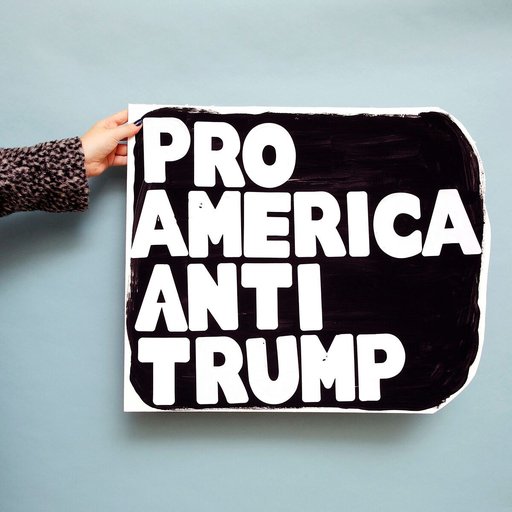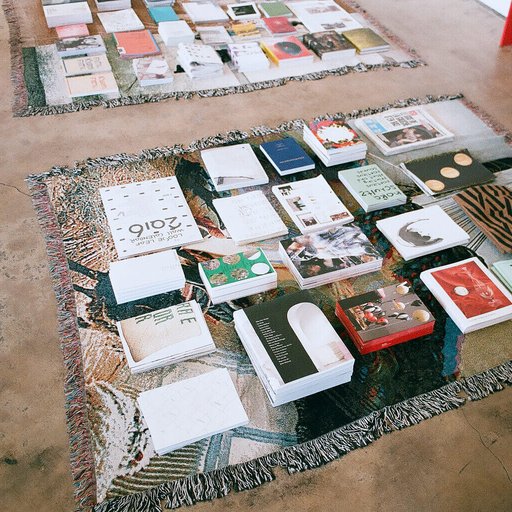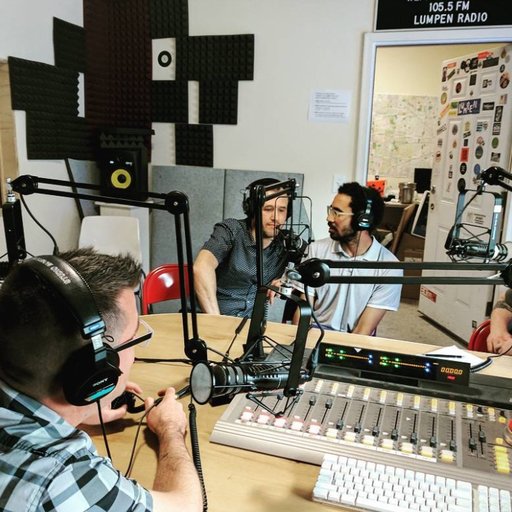Year 2017 saw its fair share of controversies, culture wars, and political upheavals, and in some ways, it seems like the art world has run parallel to mainstream culture more than ever in recent decades. Artists have not only responded to the difficult issues that have come to light this year; some have raised controversy themselves. Some new, some old (and some really, really old); some groundbreaking, some irksome—here are, for better or for worse, some of the most talked about artists of 2017.
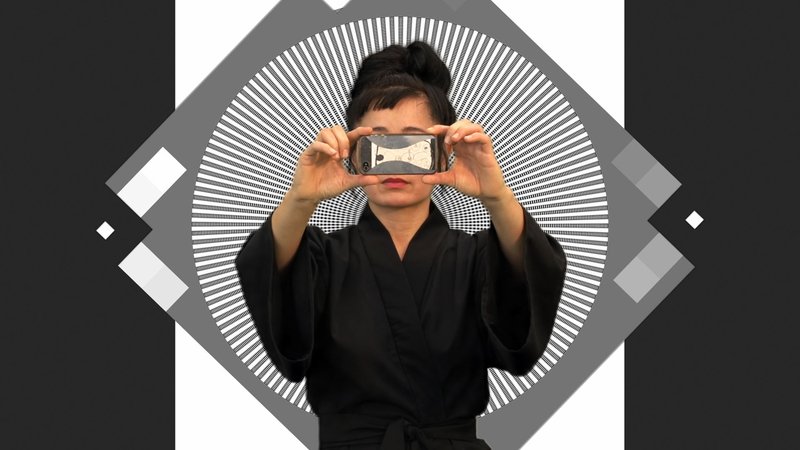 Hito Steyerl, Image courtesy of MoMA
Hito Steyerl, Image courtesy of MoMA
A lot of people are already proclaiming 2018 as the predictive “year of the woman.” While the fulfillment of that title remains to be seen, we can assuredly say that 2017 saw some pretty heavy hitters and well (and long) deserved high moments for women. German artist, filmmaker, and cultural theorist Hito Steyerl topping ArtReview’s Power 100 list is indisputably one of them. As the first woman to claim the number one seat in the list’s 16 years of review, Steyerl’s influence sets a hopeful, critical, exciting, and uncompromising stage for women in years to come.
 Balthus, Image courtesy of Theartstory.org
Balthus, Image courtesy of Theartstory.org
The wake of the #metoo movement has left many considering the predicament of when, or whether separating the art from the artist is a valid argument (read: "The Picasso Problem: Why We Shouldn't Separate the Art From the Artist's Misogyny"). Nowhere has this debate become more obvious in the art world than in the recent conversations surrounding a Balthus painting hanging at the Met. Celebrated for his suggestive portraits of underage girls (between the ages of eight to fourteen), Balthus’ predatory attitude has, up until now, flown under the radar but in plain sight, much like the unsavory personal narratives of Woody Allen, or Pablo Picasso. That is until earlier this month when two women began an online petition requesting that the Metropolitan Museum of art either remove a painting featuring a thirteen year old girl named Thérèse Blanchard titled Thérèse Dreaming, or at the very least, reconsider and recontextualize the way in which the work is presented. The petition sparked outrage from those who wished to maintain the status of “separating the art from the artist,” while the Metropolitan has refused to consider either option.
 Kerry James Marshall, Image Courtesy of E-Flux
Kerry James Marshall, Image Courtesy of E-Flux
American Artist Kerry James Marshall had his largest museum exhibition to date this past year at the MET Breuer; a collection of over 70 paintings spanning the artist’s momentous 35-year career. The retrospective showcased Marshall’s evocative paintings, which dismantle racial stereotypes and assert the integral role of the black figure in Western painting, from which the richness of black culture has historically been omitted. The exhibition coincided with a show of selected works curated by the artist, titled Kerry James Marshall Selects, which featured a range of art historical artifacts and works spanning over 5,000 years—from African masks to French post-Impressionism—highlighting Marshall’s rich, eclectic range of influences for his own work. (In 2017 Phaidon also published the most comprehensive book to date on the artist.) As disheartening as 2017 was for many minorities, by introducing black folk as the forefront of the art historical narrative, Kerry James Marshall gave us hope that things can change.
 Anne Imhof, Image courtesy of the Biennial Foundation
Anne Imhof, Image courtesy of the Biennial Foundation
German anti-fascist artist Anne Imhof was a breakout sensation at the Venice Biennale this year. Her provocative and haunting performance Faust earned her the Golden Lion prize for Best National Pavilion, along with the 2017 Absolut Art Award. In the esteemed work, Imhof creates a sterile, clinical space with raised glass floors for visitors to walk on, beneath which performers in Adidas health-goth garb assume a variety of hunched shapes amidst scattered objects such as bottles, chains, spoons, hoses, candles, and small fires, while industrial sound music plays in the background. Outside of the pavilion, two Doberman dogs pace as though guarding the entryway. Audiences had such a visceral reaction to the work not only because of its stunning aesthetic quality; but also because of its timely dialogue about power, retention, and protection from outside forces, and the inclusion and exclusion of bodies. Imhof captures the notion of being trapped by the structures we've built around ourselves more aptly than any artist in recent history.
 Leonardo Da Vinci, Image courtesy of Simon and Schuster
Leonardo Da Vinci, Image courtesy of Simon and Schuster
This year, the good ‘ole Renaissance masters made a major comeback, garnering hoards of media attention. Michelangelo Buonarroti had a massive retrospective consisting of 133 drawings at The Metropolitan Museum of Art, (the 3-month duration of the show being the maximum amount of light exposure that the works can withstand), while Leonardo Da Vinci’s (alleged) painting Salvator Mundi, branded as “The Last Da Vinci” sold for $450,312,500 at Christie’s, becoming the most expensive piece of artwork ever sold. Simon and Schuster recently published a biography on Da Vinci written by Walter Isaacson (the same guy who wrote the Steve Job’s biography). The book sheds a new light on the famed artist: painting him as a social outcast, “illegitimate, gay, vegetarian, left handed (and) easily distracted,” which makes him sound a lot more relatable than I'd imagined. (Until January 7th, catch some of Da Vinci's drawings at the Met's “Leonardo to Matisse: Drawings From the Robert Lehman Collection.”)
NINA CHANEL ABNEY Nina Chanel Abney, Image via Vanity Fair
Nina Chanel Abney, Image via Vanity Fair
220 black people were shot and killed in the U.S. by police in 2017—that's 23 percent of the total number, despite African Americans only making up 12.3 percent of the U.S. population. Translating the sentiments of the Black Lives Matter movement onto the canvas and into the art world is Chicago-born artist Nina Chanel Abney, whose socio-political paintings focus on corruption in the criminal justice system. The young artist had her first solo exhibition, Royal Flush, at The Nasher Museum at Duke University; a survey of ten year's worth of fresh, vibrant paintings, watercolors, and collages. Abney is known for playing with identity in her work, often mixing and matching the races and genders of her subjects to counter her viewer's preconceptions. Her works are rife with symbolism and utilize the contemporary lexicon of popular culture and social media, with highly-saturated, densely crowded information harkening to the endless-scroll of a newsfeed; making for satirical, multi-layered, aesthetically riveting commentaries on contemporary culture. In Abney’s own, apt description, the works are “easy to swallow, hard to digest." Royal Flush will continue to travel across the country to Chicago, Los Angeles, and New York into the new year, so catch this rising star if you can.
CARDI B Cardi B, Image courtesy of New York Magazine
Cardi B, Image courtesy of New York Magazine
In a little under an hour this past summer, Bronx-born rapper Cardi B did more to transform the space of an arts institution than any relational aesthete could ever claim—in the words of one Twitter user, “Cardi B has PS1 the most packed I’ve ever seen it this shit is Summer Jam right now.” I mean, just watch the video on YouTube and let us know if you can tell us when a museum has ever had that many people even half as excited to see anything. It’s pretty unusual for the art world to poke its head out of its catacombs of obscurity to participate in mainstream culture, so when it was announced that Cardi would be performing at this past summer’s Warm Up concert series at MoMA PS1, it felt like nothing less than a beautiful, miraculous, but spot-on fever dream. Who would have ever thought that the Bronx-born stripper turned record-breaking recording artist (in August, Cardi became the first solo female rapper to top the Billboard charts in 20 years) would make the first live debut of her Billboard topping “Bodak Yellow” in her home city of New York at an event typically attended by art school freshmen (and other characters of cultural pretension). Her performance at PS1 was profiled by everyone from The New York Times to Complex and since then, Cardi has graced an iconic cover of New York Magazine, catapulting its photographer, Hassan Hajjaj to international fame. We’re just glad she graced the art world at one point this year, and hope she doesn’t forget us.
DANA SCHUTZ Dana Schutz, Image courtesy of SF MoMA
Dana Schutz, Image courtesy of SF MoMA
Out of all the artists on this list, Dana Shutz takes the cake as the most talked about artist of 2017. In fact, her painting of Emmit Till in the Whitney Biennial sparked so much controversy, Whoopi Goldberg and her cohorts debated the whole ordeal on ABC's The View. If that's not mainstream, we don't know what is. (In case you've been living under a rock, Emmit Till was a 14-year-old African-American boy who was lynched in 1955 after a white woman said he offended her. Shutz, a white woman, painted him in his casket, his face 'slashed' with brushstrokes.) The controversy polarized the art world; one camp criticized Shutz and the Whitney curators for exploiting the violence and suffering endured by Black Americans, the other camp felt the criticisms threatened free speech and limited artists by restricting which subjects are considered fair game. Dana Shutz was notably silent in the debate (an apology letter attributed to Shutz turned out to be a fake), but the controversy made several other art-world professionals also some of the most talked about figures of 2017: Hannah Black, the black Berlin-based artist who penned an open letter to the Whitney demanding the removal and destruction of the infamous painting, and Christopher Y. Lew and Mia Locks, the Whitney Biennial curators who included the painting in the show and defended their decision to keep it there.
KARA WALKER Kara Walker, Image courtesy of Vulture
Kara Walker, Image courtesy of Vulture
This year has been exhausting for everyone. But women and people of color have been saddled with the particularly Sisyphean expectation of having to craft appropriate, strong responses to a seemingly unending (and suddenly, immediately transparent) barrage of violence. In a controversial artist’s statement for her show at Sikkema Jenkins & Co. back in September, artist Kara Walker made it absolutely clear that she is sick of it. The statement opens up with Walker stating plainly that she is “tired, tired of standing up, being counted, tired of ‘having a voice,’ or worse, ‘being a role model,’ Tired, true, of being a featured member of my racial group and/or my gender niche.” The statement triggered widespread criticism (mostly from those disappointed that such a prominent African American woman artist would rebuff her own authority), as well as an important conversation about the oppressive nature of political expectation for women and minority artists.
 Jenny Holzer by Brad Elterman, Image courtesy of Purple Magazine
Jenny Holzer by Brad Elterman, Image courtesy of Purple Magazine
Despite the fact that it was coined by Jenny Holzer back in the 1980s as part of her series of “truisms,” the phrase “Abuse of power comes as no surprise” might as well be the defining quote of 2017. Endlessly shareable (artists like Holzer and Barbara Kruger practically invented the meme format years before the internet even really existed), the phrase made social media rounds many, many times this year, capturing our collective sighs and shaking of heads. In the wake of the #metoo movement, and a seemingly never-ending roster of art-world men accused of sexual harassment (Artforum's former publisher Knight Landesman, the Jewish Museum curator Jens Hoffman, art-star painter Chuck Close, Canadian collector François Odermatt, Armory Show director Benjamin Genocchio... to name a few), Holzer's truism inspired the title of a website and open letter, not-surprised.org, in which thousands of art-world professionals and community members—including Holzer herself—signed their names in a powerful gesture of solidarity and intolerance for sexual harassment and abuse of power in the art world. Holzer also made some new works this year: she helped design the New York City AIDS Memorial (which technically opened in 2016—on December 1, World Aids Day); and for a project at the Blenheim Palace in the UK, Holzer projected text drawn from accounts gathered by The Not ForgottenAssociation, a British charity that veterans and serving military who suffer from combat injuries and other service-related challenges. In a year when many artists are asking themselves, can art really help the world?, Holzer offers some pretty tangible evidence to inspire a resounding "yes."
 Awol Erizku, Image via US Magazine
Awol Erizku, Image via US Magazine
When Beyoncé and Jay Z announced their pregnancy, they did so in an Instagram post that in less than 24 hours accumulated almost 8 million likes, making it the most liked post in the social media network's history. The image was taken by the Ethiopian-born, Los Angeles-based artist Awol Erizku. (Artspace collaborated with the artist to produce a limited edition to support NADA; see it here.) Though the artist had already established himself as a photographer, sculptor, and video artist, the photo depicting a pregnant, semi-nude Beyonce kneeling on a bed of flowers wearing a veil, catapulted the artist into fame and mainstream media attention.
OLIVIA LOCHER Olivia Locher, Image courtesy of The Art Gorgeous
Olivia Locher, Image courtesy of The Art Gorgeous
Olivia Locher's photo series I Fought the Law, as they say, "broke the internet" this year. That makes the 44th thing Locher has broken, as the series consists of 43 images of people breaking the United States' most absurdly specific laws, most of which we didn't even know existed. The artist's highly saturated photos are reminiscent of the works in Maurizio Cattelan and Pierpaolo Ferrari's Toilet Paper Magazine, and depict such odd (but real) laws as, "In Delaware, it's illegal to serve perfume as liquor," "In Ohio, it's illegal to disrobe in front of a portrait of a man," "In Kentucky, it's illegal to paint your lawn red," and "In South Dakota, it's unlawful to cause static." Even if you haven't heard of her, you've probably seen that image of a girl in white Levi shorts with a melting sprinkled ice cream cone in her back pocket, which spread across the internet like wildfire, because apparently, in Alabama, it's illegal to have an ice cream cone in your back pocket. As if you didn't think America was absurd enough already, Locher is here to show us just how beyond bonkers it really is.
KEHINDE WILEY Kehinde Wiley, Image courtesy of the New York Times
Kehinde Wiley, Image courtesy of the New York Times
Inclusion in the Whitney Biennial, or a solo show at MoMA? What artists wouldn't kill for that. But let's be real, how many artists can actually say that the Obamas sat patiently in their studio to have their portrait taken. Los Angeles-based painter Kehinde Wiley, known for his large scale paintings that reimagine classic European paintings with African American subjects, made headlines October when former President Barack Obama announced he'd chosen the artist to paint his portrait. At the end of each presidency, the Smithsonian's National Portrait Gallery partners with the White House to commission portraits of the President and the First Lady. (Michelle Obama chose up-and-coming artist Amy Sherald, also African American, to paint her portrait.) This is the first time the Smithsonian is commissioning Black American artists to paint official presidential portraits since they began the tradition in 1994.
MILO YIANNOPOULOS
 Image courtesy of Breitbart
Image courtesy of Breitbart
Ok, we really hate to do this, but we have to admit that despite 2017 being a year of exposure for lesser-heard voices in art, the pro-Trump art show titled #DaddyWillSaveUs also happened, and we wouldn't be telling the whole story if we didn't mention it. Though the show, reportedly the first conservative art show ever to open in New York, technically happened at the end of 2016 (right before Trump was elected), its sentiments have pervaded through this hellish year, and we'd be remiss to forget about it. In one obviously, intentionally disturbing performance Angel Moms, mega-troll and Breitbart editor Milo Yiannopoulos, aka "MILO," bathed in a claw-footed tub full of pig's blood; wearing sunglasses, gold chains, a Make America Great Again hat, and douchey expression. The piece, according to the least reputable source, Breitbart, was meant as a "tribute to the suffering of those who have lost loved ones at the hands of illegal aliens and Islamic terrorists." MILO gets his kicks offending people, and he is really good at it. But from a critic's perspective, the piece was contrived and lackluster: a lazy, cliched display that relied on shock value. The unfortunate existence of MILO's "art" is a reminder to keep being an "obsessive... mollycoddling... progressive social justice warrior," if for no other reason than to piss this guy off.
[related-works-module]











